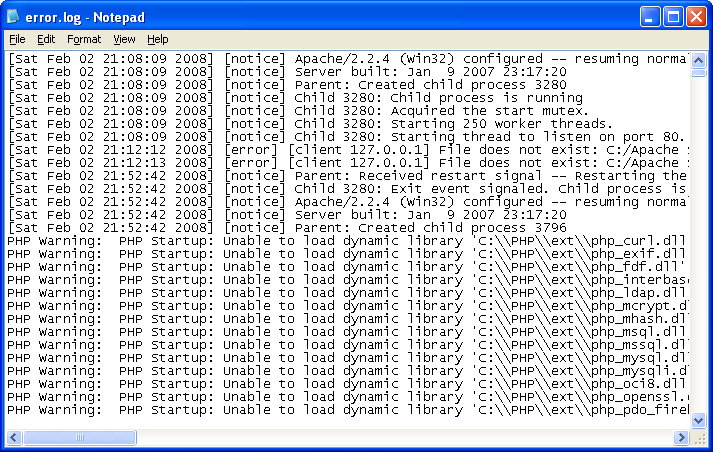Error Log
As mentioned above, the Apache access log is one of several log files produced by an Apache HTTP server. This particular log file is responsible for recording data for all requests processed by the Apache server. So if an individual visits a webpage on your site, the access log file will contain details regarding this event. The Apache web server can be configured to give the server administrator important information about how it is functioning and what issues, if any, need to be addressed. The main avenue for providing feedback to the administrator is through the use of log files. Web server logs all traffic to a log file. There are various formats and this page will help you understand the log formats that are used. The most popular logging formats are the NCSA (Common or Combined) used mostly by Apache and the W3C standard used by IIS.These formats will. How to view Apache log files - How to view Apache log files on a dedicated server or VPS. If you're experiencing web server difficulties, or you just want to see what Apache is doing, log files.
| Related Modules | Related Directives |
|---|
The server error log, whose name and location is set by the ErrorLog directive, is the most important log file. This is the place where Apache httpd will send diagnostic information and record any errors that it encounters in processing requests. It is the first place to look when a problem occurs with starting the server or with the operation of the server, since it will often contain details of what went wrong and how to fix it.
The error log is usually written to a file (typically error_log on Unix systems and error.log on Windows and OS/2). On Unix systems it is also possible to have the server send errors to syslog or pipe them to a program.
The format of the error log is defined by the ErrorLogFormat directive, with which you can customize what values are logged. A default is format defined if you don't specify one. A typical log message follows:
[Fri Sep 09 10:42:29.902022 2011] [core:error] [pid 35708:tid 4328636416] [client 72.15.99.187] File does not exist: /usr/local/apache2/htdocs/favicon.ico

The first item in the log entry is the date and time of the message. The next is the module producing the message (core, in this case) and the severity level of that message. This is followed by the process ID and, if appropriate, the thread ID, of the process that experienced the condition. Next, we have the client address that made the request. And finally is the detailed error message, which in this case indicates a request for a file that did not exist.
Apache Web Server Logs List
A very wide variety of different messages can appear in the error log. Most look similar to the example above. The error log will also contain debugging output from CGI scripts. Any information written to stderr by a CGI script will be copied directly to the error log.

Apache Web Server Logs Interview
.jpg)

Putting a %L token in both the error log and the access log will produce a log entry ID with which you can correlate the entry in the error log with the entry in the access log. If mod_unique_id is loaded, its unique request ID will be used as the log entry ID, too.
Apache Web Server Logs Free
During testing, it is often useful to continuously monitor the error log for any problems. On Unix systems, you can accomplish this using:
